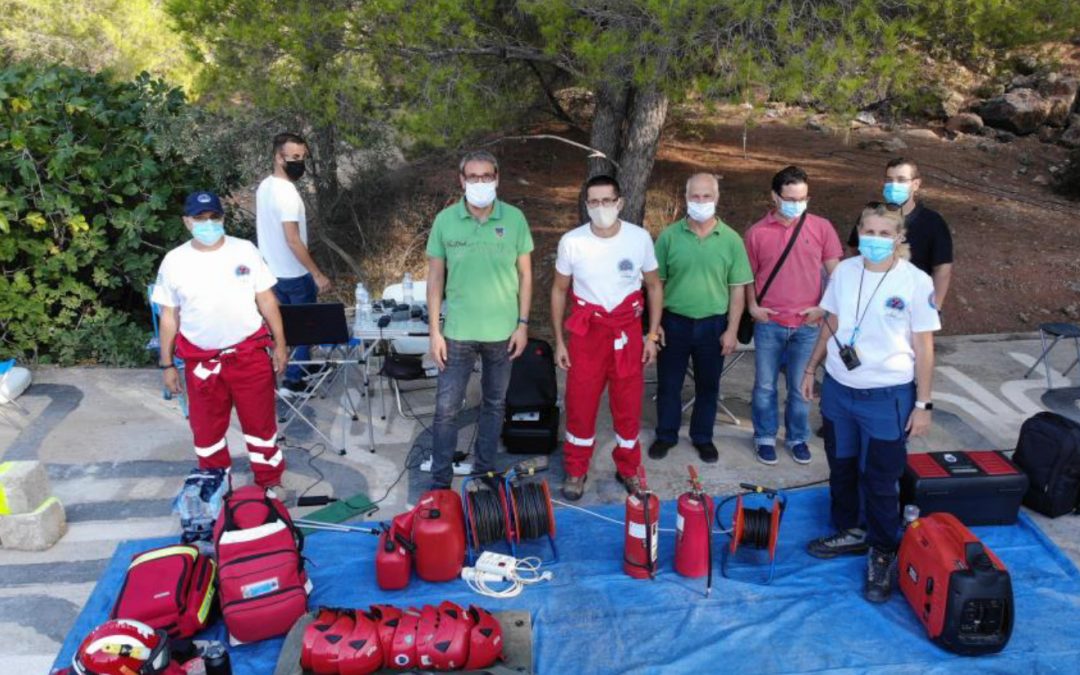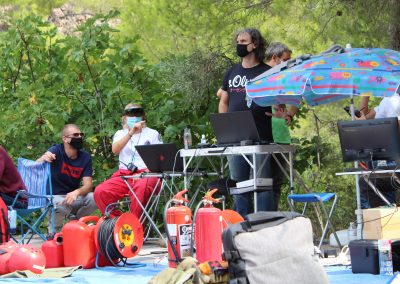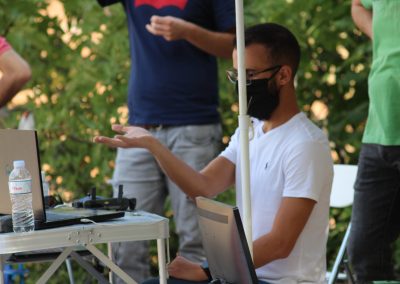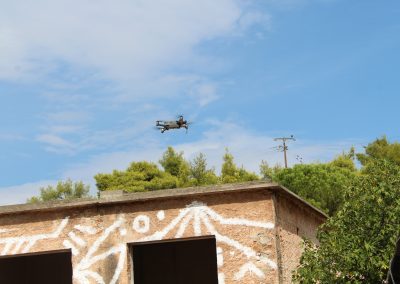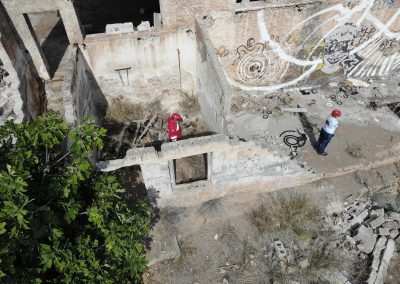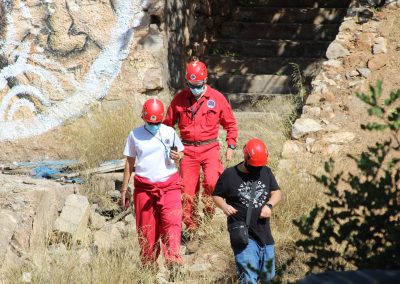On Friday, October 2, 2020, FASTER’s Greek partners HRTA, CERTH, UniWA, and OTE participated in the first Greek pilot in order to demonstrate their tools and test their integration and interoperability. The event, organized by HRTA, took place outdoors, at an abandoned mining site. Accessible only by 4×4 vehicles, sporting derelict buildings, with no grid power and no mobile phone signal coverage in the area, the pilot site was chosen to pose a challenge.
- HRTA quickly set up a field base of operations, including gasoline-powered generators, foldable desks and chairs, food, water, medical supplies, and hard hats.
- OTE set up a local wireless network via OpenAir Interface, harnessing the power of 4G on a local level in order to ensure the connection and interoperability of the devices needed by all other tools, including laptops, smartphones, wearables and the HoloLens. Connections were tested using both OpenAir Interface and basic Wi-Fi, and the differences of each mode were noted.
- CERTH demonstrated gesture-control for UAVs and extended vision in a joint demonstration. Two drones, a DJI Mavic 2 Enterprise Dual and a DJI Mavic Mini, were piloted using gestures, while the drones’ video feed was displayed in Augmented Reality on a HoloLens.
- UniWA tested MORSE (a tool that uses wearables to capture gestures, translate them into predefined messages, and transmit them to a colleague’s wearable device), Smart Textiles Framework (providing a complete solution including biometrics and environmental modules that collect and send data at a specially designed mobile application for Android) and ResCuE.(a resilient communication device that is able to transmit encoded messages without any need for active communication infrastructure).
This was a very useful and valuable experience, in which first responders got a hands-on look at FASTER’s developed tools, and technical partners got a better understanding of the conditions and difficulties present out of the lab, in real response mission conditions.

